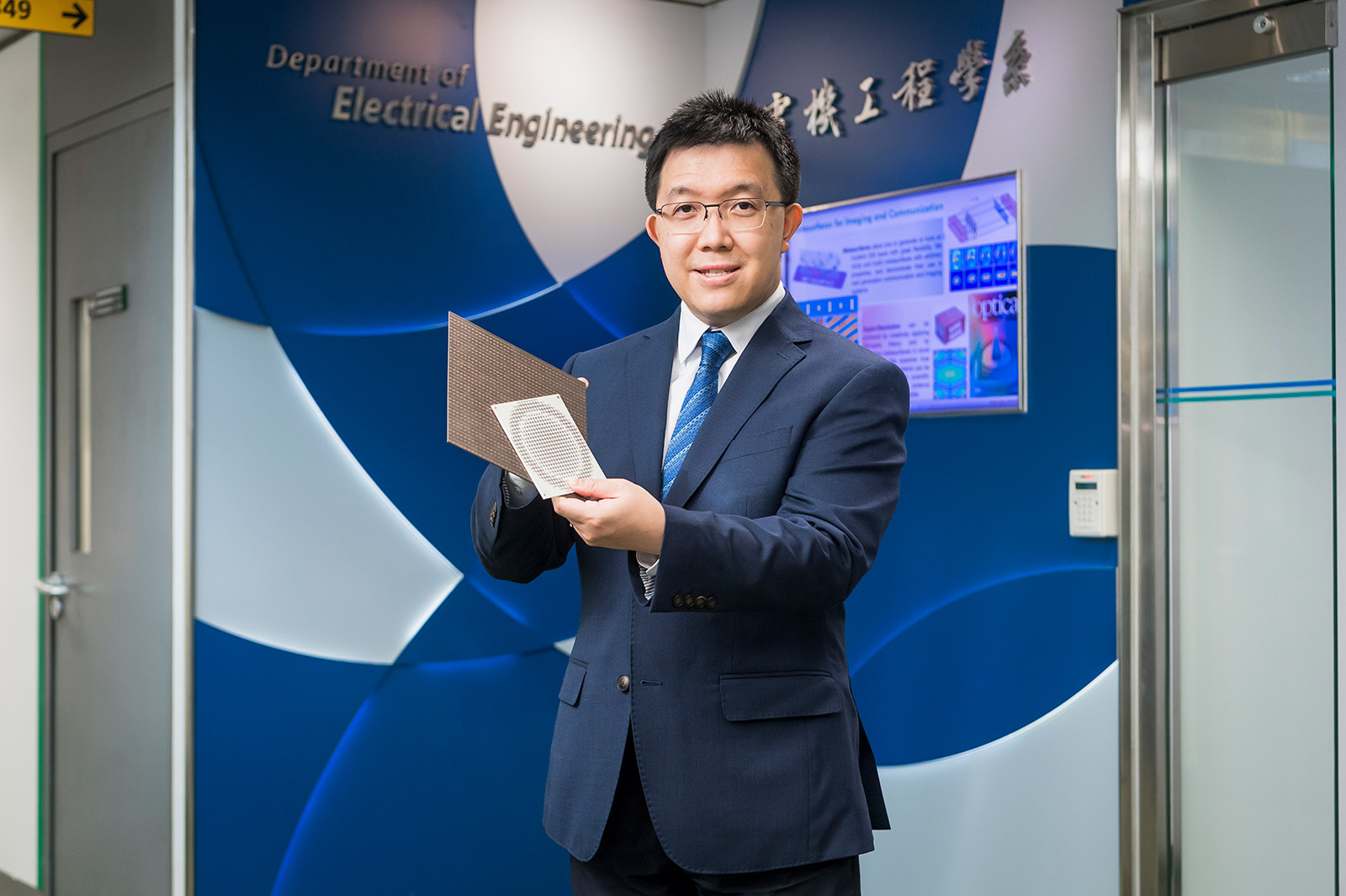CityUHK's electromagnetic defensive shield innovation wins RGC funding

A City University of Hong Kong (CityUHK) scientist is participating in a research project on “High-Frequency, High-Power and High-Efficiency Wireless Power Transfer (WPT) Technologies”, which was awarded HK$28.36 million in funding from the Research Grants Council’s Theme-based Research Scheme (TRS). The project aims to contribute to building a sustainable environment and to solidify Hong Kong’s globally leading position in the innovation and technology of WPT.
Wireless charging pads are becoming increasingly common in our daily lives, with applications in airports, railways, cars, restaurants, and more. The Wireless Power Consortium has established the global wireless charging standard “Qi”, and the patented wireless charging technology from CityUHK has made significant contributions to it. The establishment of the Qi standard has facilitated the development of wireless charging technology for smartphones, while demand for the Internet of Things (IoT) has further driven the growth of the wireless charging industry. As early as 2018, the novel technology developed by CityUHK enabled different mobile devices to be charged simultaneously on a single charging plate, which earned a substantial licensing fee. According to market research forecasts, by 2030, the global wireless power transmission market will reach US$35 billion.
The power level of WPT traditionally decreases with increasing operating frequency. Currently, the wireless power transmission industry is considering the use of Megahertz (MHz) operations to improve system efficiency. The collaborative research project, co-investigated by Professor Alex Wong Man Hon, from the Department of Electrical Engineering of CityUHK addresses the three major technical challenges in MHz operations. In this project, Professor Wong is responsible for developing an electromagnetic “defensive shield” – metasurface shielding – to provide innovative solutions to enclose the magnetic field.
Professor Wong said, “This innovative metasurface technology can form an electromagnetic defensive shield which can block energy and radiation during the wireless power transfer process, thus preventing human exposure to electromagnetic fields. At the same time, the defensive shield will not interfere with the resonator. Rather, intelligent co-design can create a synergistic effect, potentially leading to improvements in wireless charging efficiency.”
The expected outcomes of the project include new WPT technologies for the high-power range of 100W to 1kW and the high-frequency range from 1MHz to 13.56MHz, with efficiency exceeding 95%. It will provide the industry with new wireless charging technology and form a new standard. The technology has a wide range of applications, including wireless charging tools for laptops, drones, e-bikes, electric wheelchairs and mobile robots.
The TRS focuses on supporting UGC-funded universities working on themes of strategic importance to the long-term development of Hong Kong. The project involves a CityUHK faculty member, as well as local and international collaborators. The Project Coordinator is Professor Ron Hui Shu-yuen, Chair Professor of Power Electronics at the Department of Electrical and Electronic Engineering, The University of Hong Kong. He previously pioneered planar wireless power transfer (WPT) technology that led to the development of the world’s wireless charging standard, Qi, during his time as Chair Professor of Electronic Engineering at CityUHK.
CityUHK is also participating in two funded TRS projects, namely ‘Enhancing Hong Kong’s Role in Sustainable Supply Chain Finance via Technology Transformation’ and ‘Mechanisms and Key Technologies of Multi-Sensory Emulation Wearable Devices’.
In addition, CityUHK is part of the research team in the ‘AI-Powered Surgical Robots’ project, which obtained funding worth HK$96.80 million under the Areas of Excellence (AoE) Scheme by the RGC. Led by Professor Yunhui Liu at the Department of Mechanical and Automation Engineering of The Chinese University of Hong Kong (CUHK), the interdisciplinary research team from CUHK, CityUHK and The Hong Kong Polytechnic University will collaborate in developing cutting-edge AI-powered surgical robots with high autonomy. The technologies to be developed are expected to enable surgical robots to reliably and efficiently sense and understand surgical objects and fields; to automatically conduct surgical planning and navigation during procedures; to learn surgical skills from expert surgeons; and to automatically complete surgical actions on soft tissues and organs in complicated and dynamic surgical environments. Clinical experiments will be conducted to validate the technologies and their applications via urological procedures.
The AoE Scheme aims to provide support to the UGC-funded universities to build upon their existing strengths and develop them into areas of excellence.